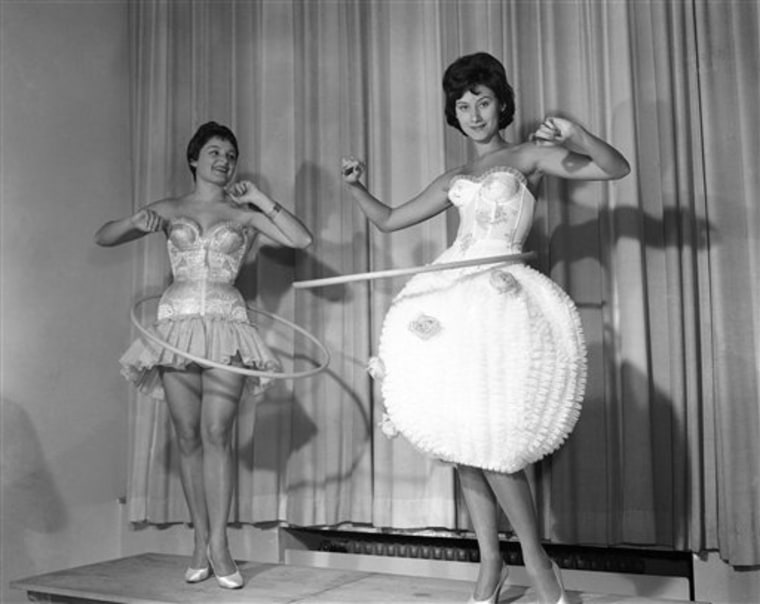It's hard to believe in an age of action-packed video games and other whiz-bang gadgets, but the Hula Hoop once was the hippest toy around.
The hoopla began 50 years ago Thursday when entrepreneurs Richard Knerr and Arthur "Spud" Melin sought a trademark for a plastic cylinder based on a similar toy that had enjoyed modest success in Australia's school yards.
Before long, the Hula Hoop had more hips swiveling than Elvis Presley.
Wham-O Inc., the company founded by Knerr and Melin, sold more than 100 million Hula Hoops — at a suggested retail price of $1.98 apiece — after just a year on the U.S. market. That was more than one hula hoop for every two Americans at the time.
"It became a real piece of Americana," said toy historian Tim Walsh, whose book about Wham-O is scheduled to be published in October.
The Hula Hoop became so ubiquitous that the former Soviet Union banned the toy as a symbol of the "emptiness of American culture."
Not long after that, the Hula Hoop became a glaring example of the toy industry's now familiar boom-and-bust cycles. Almost as quickly as they became a household staple, millions of Hula Hoops began collecting cobwebs in garages across the country.
"The Hula Hoop was the grandaddy of all fads," said Chris Guirlinger, Wham-O's vice president of marketing and licensing.
Hula Hoop's downward spiral nearly ruined Wham-O, which had ramped up production to satisfy the once-frenzied demand for the toy.
Fortunately, the company had developed another offbeat toy — a flying disc called the Frisbee — that took off just as Hula Hoop sales plummeted.
Saddled with a glut of unwanted Hula Hoops, Wham-O stopped manufacturing the toy until 1965 when Knerr and Melin came up with a new twist: they inserted ball bearings in the cylinder to make a "shoosh" sound.
That helped revive interest in the Hula Hoop, which still makes money for Emeryville-based Wham-O. The privately held company declined to reveal how many Hula Hoops it sold last year.
Wham-O has had other iconic toys, including the Superball and Slip 'N' Slide, but none came close to enthralling kids like the Hula Hoop once did, said Lori Gregory, Knerr's daughter.
"My father always believed the more simple a toy was, the better it was," Gregory said. "If he brought home a toy and we couldn't figure out how to play with it, he figured it wasn't any good."
Knerr died earlier this year. Melin, his friend since boyhood, died in 2002.
As for the Hula Hoop, it might be poised for another spurt in popularity. You can spin a virtual form of the toy on a new Nintendo Wii video game promoting physical fitness.
